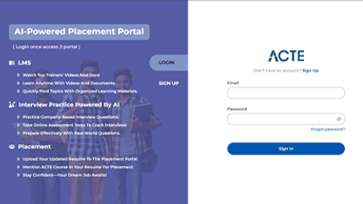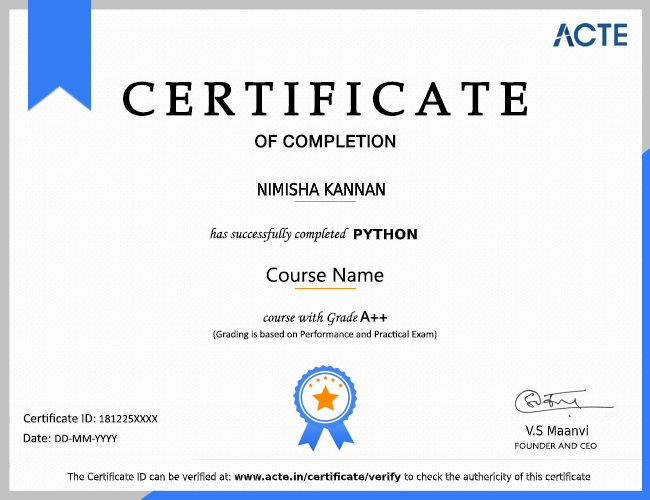Understanding your target learner persona is what differentiates a ACTE from other great online learning center. The training materials should use the learner’s language and include examples that are meaningful and relevant to them. When the content truly speaks to the learner, they’ll feel more connected to the experience and continue engaging with it.
The Mainframe administrator maintains the system software environment for business purposes, including the day-to-day maintenance of systems to keep them running smoothly. For example, the database administrator must ensure the integrity of, and efficient access to, the data that is stored in the database management systems.
Yes,Computer networks are critical parts of almost every organization. Network and computer systems Admin s are responsible for the day-to-day operation of these networks. They organize, install, and support an organization’s computer systems, including local area networks (LANs), wide area networks (WANs), network segments, intranets, and other data communication systems.
Network Admin s can advance to become computer network architects. They can also advance to managerial jobs in information technology (IT) departments, such as computer and information systems managers.
The mainframe’s continued evolution and deployment as well along with the fact that it remains a core system within many organisations brings opportunities and jobs.Glassdoor (www.glassdoor.com) lists over 6,100 jobs for mainframe related skills in the United States. Indeed (www.indeed.com) puts the number of jobs posted over a 15 days period at over 2,000. IBM has predicted that by 2020, given the current growth curve of its IBM Z division, there will be more than 37,000 new mainframe administration positions.
The availability of jobs, often in large organisations who pay well is an attractive proposition to many. More importantly, by supporting open source software and modern computer languages, IBM is appealing to those who want skills that promise a long-term future.
YES,Mainframe is large server technology.Mainframe Server administration courses open new set of opportunity in leading MNC. Professional with mainframe servers admin knowledgeable is very few in India and unable to meet the industry’s demand. Industry need huge professional in this segments. Server admin responsibility include create user, grant user right, monitor online transaction , check for downtimes, check for the job queue , move servers and running all the software smooth. Our Mainframe Admin training program offered not just theory and practically hand-on session but also engaged you with projects case study offer a complete, real time experienced this will be help you jump started and hit the ground run from day one.
We are happy and proud to say that we have strong relationship with over 700+ small, mid-sized and MNCs. Many of these companies have openings for Mainframe System Admin . Moreover, we have a very active placement cell that provides 100% placement assistance to our students. The cell also contributes by training students in mock interviews and discussions even after the course completion.
The system Admin generally relies on the software vendor support center personnel to diagnose problems, read dumps, and identify corrections for cases in which these tasks aren't performed by the system programmer.
- Installing software
- Adding and deleting users and maintaining user profiles
- Maintaining security resource access lists
- Managing storage devices and printers
- Managing networks and connectivity
- Monitoring system performance
The prerequisites for learning Mainframe Admin are listed below:
- COBOL DB2
- EasyTrieve/JCL
- IBM CICS
Yes,Mainframe is well established. Hence, once you have learned everything good, you don’t have to worry about keeping you updated now and then. Also, Mainframe languages like COBOL are relatively easy to learn as they are “English-like programming language”.
Our courseware is designed to give a hands-on approach to the students in Mainframe Admin . The course is made up of theoretical classes that teach the basics of each module followed by high-intensity practical sessions reflecting the current challenges and needs of the industry that will demand the students’ time and commitment.
Yes,Mainframe is a technology where the requests received are processed fast and sent to the related processor cards. These systems are used by major IT companies and Walmart, NASA etc.
- Audience with interest to learn.
- Individual who aspire to Mainframe Admin and Architect, developer, Analyst, Tester also relative professional roles.
- Helps to move forward the professional aspects and technical skillset of professionals who are intended to do the same.
- Candidates with mainframe application development.
The amount of time it takes to develop a solid base in coding depends on which language you are learning and the amount of time you put into learning and practicing code. Those who have a true passion and purpose for coding normally take about 3 months to learn in ACTE before starting real life projects with clients.
Its better to select ACTE which comprises these below factors.
- Appropriate training with well Equipped facilities.
- Technical Mainframe Developer certifications
- Complete knowledge in the Mainframe Developer experiments
- Technical theory
- Mock Interviews
Mainframe Developer is one of the top technologies in today's market, as small to hypergrowth companies are using automation in their day-to-day tasks.
Here are a few reasons for you to pursue a career in Mainframe Admin :
- Hands-on engagement with the best-engineered platform in human history.
- A sense of mission and higher purpose
- The emergence of agile mainframe processes and tools
- Enterprise applications are multiplatform/mainframe applications
- community support and training.
- Build a lucrative career.
Things that Mainframe Administrator must know
Mainframes are secure because their simplified architecture lacks vulnerable endpoints. Customer information is protected by technologies that have shown the ability to secure endpoints.
Security threats do target mainframes. These threats include:
- Insider threats
- Code-based vulnerabilities
- Human error
- Hackers
- Ransomware
Many enterprises and financial institutions rely on proven mainframe environments for crucial workloads Companies that depend on mainframes for mission-critical workloads need to evolve their approaches to security to defend against threats.
Here’s an overview of 5 ways that administrator can protect their mainframe:
1) Pervasive Encryption and Multifactor Authentication
IBM z14/z15 has pervasive encryption built in. Data is encrypted while at rest as well as in flight. Pervasive encryption allows companies to meet compliance regulations. It is also a cost-effective approach to security.
Multifactor authentication (MFA) is available for mainframes. With MFA, companies can bar hackers from accessing data without impeding authorized user access. MFA uses a combination of tokens, behaviors, and biometrics to identify authorized users and grant access.
2) Many Operating Systems, Many Security Options
Mainframes can host a variety of IBM Z operating systems and others, including z/OS, z/VSE, as well as z/Linux and z/TPF. Each operating system works differently and comes with its own set of challenges, concerns, and best practices to obtain the right fit for your environment.
If security is a top concern, the best operating system is IBM z/OS. IBM z/OS provides built-in security features to protect customer data. It is designed to offer a secure, highly available, and stable environment.
The built-in security features for z/OS provide an environment secure enough to be used by financial institutions, manufacturing, and government. IBM RACF is a proven security tool for protecting customer data. It also provides critical audit records needed for compliance.
IBM z/Virtual Machine (z/VM) is a hypervisor operating system capable of supporting thousands of Linux machines. Security for z/VM can be enhanced with an external security manager, such as RACF Security Server.
With RACF® and Lightweight Directory Access Protocol (LDAP) on z/VM, it’s possible to create an enterprise-wide point of control. At the center of z/VM is the Control Program (CP), which is used to create and maintain virtual environments to host virtual machines. RACF works with CP to receive requests from resource managers. Based on the authorization, access is either allowed or denied.
z/Virtual Storage Extended (z/VSE) is optimized for use with smaller mainframe computers. z/VSE provides stability and security for environments that do not need the suite of z/OS. It comes with several basic safeguarding features, including online security, authentication and authorization, and encryption. For companies that require additional security, an external security manager (ESM) might fit their needs.
There are several Linux (non-IBM) distributions that are compatible with IBM System z mainframes. The right security solution will depend on the Linux distribution being used to operate the mainframe. For enterprises that process high transaction volumes — such as credit card companies, airlines, and banks — there is a specialized mainframe operating system: the z/Transaction Processing Facility (z/TPF).
3) External Security Managers (ESMs)
ESMs add extra layers to the basic security measures that mainframes already supply. They help companies meet compliance and customer expectations.
Resource Access Control Facility (RACF®) is a set of tools developed by IBM for z/OS that help manage access to critical resources. With RACF, you can establish pervasive encryption for absolute security. Files are encrypted at every point, including in storage and during transmission.
CA Technologies offers two compatible security solutions for the mainframe environment. CA Access Control Facility (ACF2) is a security system that enables discretionary access control for IBM mainframe operating systems z/OS, z/VSE, and z/VM. ACF2 controls access to sensitive information and critical business assets. With advanced authentication, applications can increase their assurance that users are correctly identified and data is protected. ACF2 works similarly to other ESMs, such as RACF and Top Secret.
CA Top Secret provides advanced authentication for mainframes. By requiring additional information, applications ensure that users are properly identified. Top Secret is designed to help enterprises meet compliance requirements.
4) System Authorization Facility (SAF)
SAF is an interface built into the z/OS operating system that provides infrastructure-security administration tools to help prevent unauthorized access to critical business information. The system can recognize patterns that signal unauthorized access. Nothing gets past SAF ― not even the sneakiest of hackers.
SAF with a security manager sends an instant report so your IT team can restrict access immediately. All information gets logged, so you can review any suspicious activity in detail. The SAF router provides a common focal point for all products providing resource control. It works with ESMs to direct access control according to conditions.
5) System Management Facility (SMF)
IBM Z/OS mainframes come equipped with SMF that records every activity like the “black box” in a modern aircraft. The SMF feature keeps a complete record of all baseline activities running on the IBM mainframe OS, including user access, error conditions, software usage, I/O, network activity, and processor utilization. If any attempt is made at unauthorized access, all activities can be reviewed in SMF log files.
































